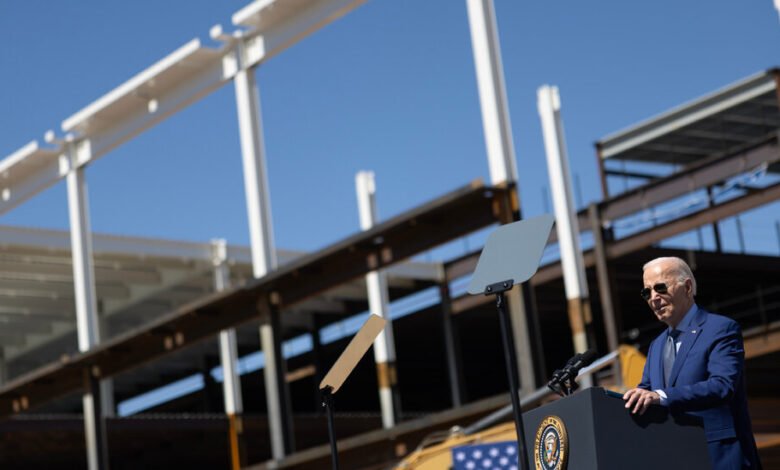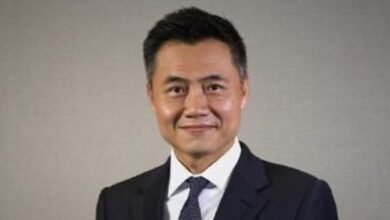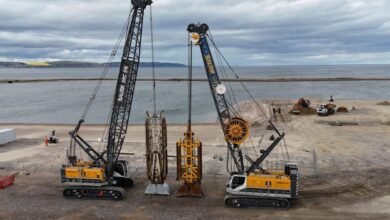Biden Aims to Bolster Chip Manufacturing, but More Investment May Be Needed

President Biden’s announcement on Wednesday of an $8.5 billion federal grant to Intel to build some of the world’s most advanced computer chips is one of the most remarkable American experiments in industrial policy since Dwight D. Eisenhower used federal funds to build the nation’s highway system.
But rather than a new beginning in America’s effort to restore a technological ability it invented — and then all but lost — there is significant risk it could be the high point of the effort.
When the CHIPS and Science Act passed two years ago, it was promoted as a down payment on the kind of long-term investment in critical sectors of the economy that made Taiwan the world’s dominant player in chip manufacturing. It is a strategy China began emulating nearly a decade ago, pouring new money, year after year, into chips and high-capacity batteries, quantum computing and artificial intelligence, to name just a few.
But while Mr. Biden celebrated the construction of Intel’s plant as a turning point in American industrial and national security strategy, there is no prospect of a follow-on program anytime soon. And quietly, Congress has sliced away at the billions of dollars that were authorized — but never fully allocated — for research, training and production.
So as Mr. Biden ticks off the immediate benefits of the Intel investment — 10,000 manufacturing jobs in Arizona, New Mexico, Oregon and Ohio, and 20,000 construction jobs to get things rolling — many in his administration worry privately that their strategy may not survive this moment of political polarization.
That is the reason Mr. Biden and his commerce secretary, Gina Raimondo, do not talk much about the scale of additional government investment that may be needed if the country is serious about spurring investment in everything from the most expensive semiconductor plants to the technologies carmakers will need to meet emissions mandates.
“President Biden often talked about this act as an ‘inflection point,’ a new role for the federal investments in the hardest problems in high technology,” said Doug Calidas, a fellow at the Belfer Center for Science and International Affairs at Harvard and a senior vice president for Americans for Responsible Innovation, an advocacy group for emerging technologies, especially artificial intelligence.
There was a hint of that concern in comments to reporters on Tuesday night by Patrick Gelsinger, Intel’s chief executive.
“It doesn’t get fixed in one three- to five-year program,” Mr. Gelsinger said. “I do think we’ll need at least a CHIPS 2 to finish that job.”
That was an optimistic appraisal. Many involved in the industry say they believe the federal investments will have to be repeated as technological challenges shift, along with assessments about which technologies are simply too critical for the United States to depend on foreign supply chains for. Past efforts to bolster the chip industry with one- or two-shot investments, back when Japan was the primary competitor, turned into spectacular failures.
The passage of the CHIPS Act in 2022 was the result of the confluence of some extraordinary events. The most vivid was the discovery during the coronavirus pandemic of how fragile the supply of critical goods could be — from surgical masks to the precursors for vaccines to the run-of-the-mill chips needed to produce cars and washing machines. Added to the mix was the growing fear of China’s power, both to disrupt the American economy and to threaten Taiwan, where more than 90 percent of the world’s most complex and advanced semiconductors are made.
Ms. Raimondo and Avril D. Haines, the director of national intelligence, briefed senators in the weeks before the bill’s passage about the remarkable vulnerabilities of America’s defense industrial base and how a cutoff of certain technologies could ground missiles and bring fighter-plane production to a halt. The specter of a rising, manipulative China that could hold Taiwan’s semiconductor production centers hostage brought over enough Republicans to win a truly bipartisan majority. In the Senate, the bill passed 64 to 33.
Even then, there were doubters. Morris Chang, the M.I.T.-educated engineer who left Texas Instruments and founded Taiwan Semiconductor Manufacturing Company, argued that money alone would not be enough to reproduce the magic he had created. He called the billions in subsidies “a very expensive exercise in futility.”
At the core of Mr. Chang’s critique was an argument that even if Intel copied Taiwan Semiconductor’s core strategy, becoming a “foundry” that produces chips designed by the likes of Apple and Nvidia, American engineers would not put in the grueling hours and perfectionism needed to be successful.
But there was a different critique, coming from the advocates of industrial policy: that Mr. Biden’s drive to bring manufacturing home had come too late, and that the bill was far too small to propel the private investment needed to bring about a real manufacturing renaissance.
The politics of an election year add yet another layer of difficulty.
Former President Donald J. Trump has launched regular attacks on another form of industrial policy: Mr. Biden’s incentives to purchase electric vehicles, a key part of his climate agenda.
Those cars have become part of Mr. Trump’s campaign rally diatribes. He argues, with no evidence, that electric cars will “kill” the American auto industry and said that the Biden administration had “ordered a hit job on Michigan manufacturing” by enticing buyers to electric vehicles through tax breaks and other subsidies.
But even Mr. Biden seems somewhat hesitant to fully back his own policy. The original CHIPS Act authorized the United States to spend $35 billion on science and innovation research through government agencies in 2025; Mr. Biden’s budget request, issued last week, is closer to $20 billion.
“The rhetoric is a lot more impressive than the budget numbers,” Mr. Calidas said.
Source link





